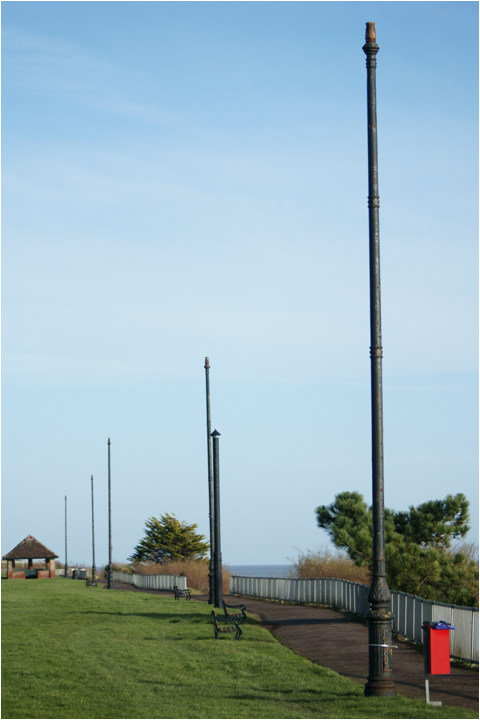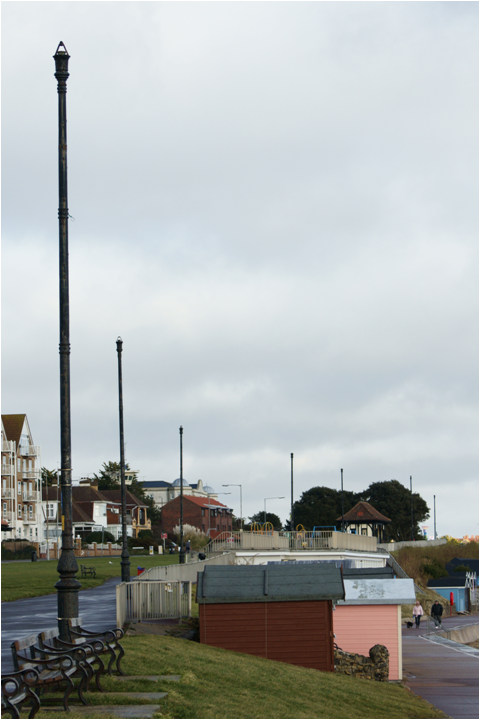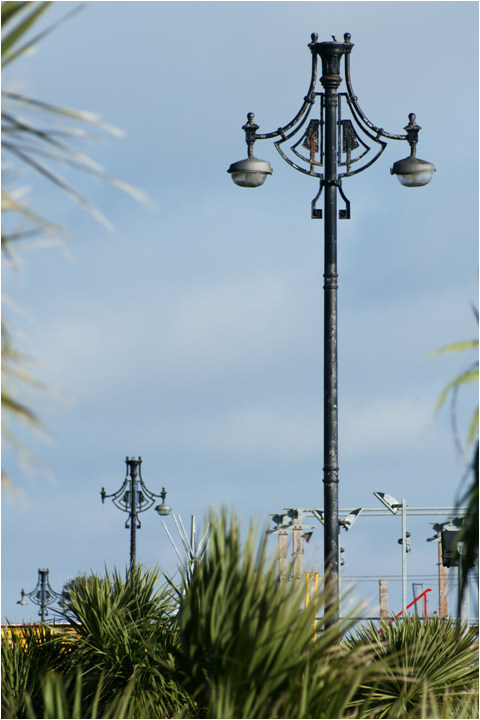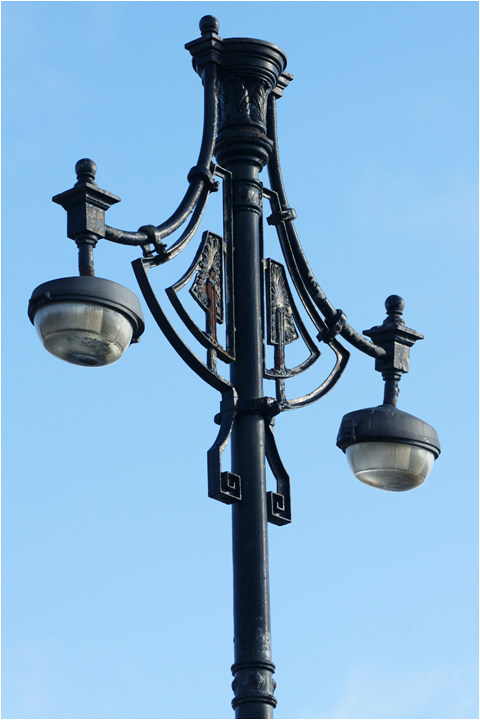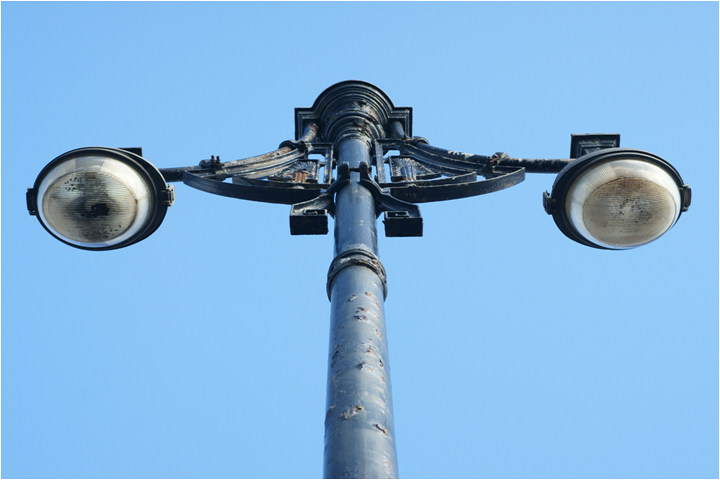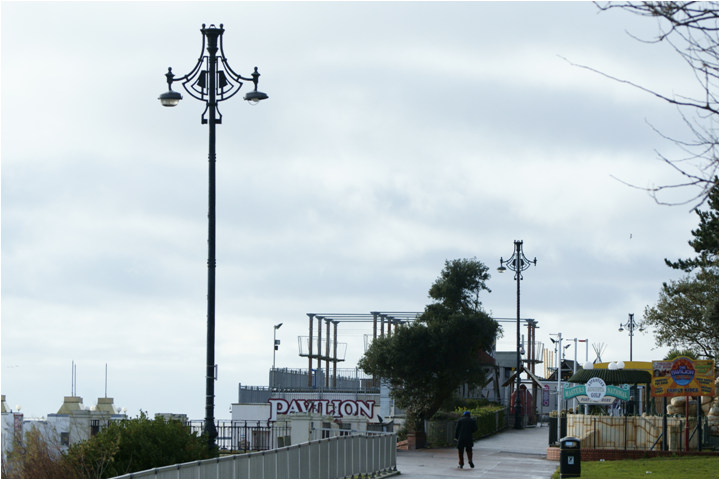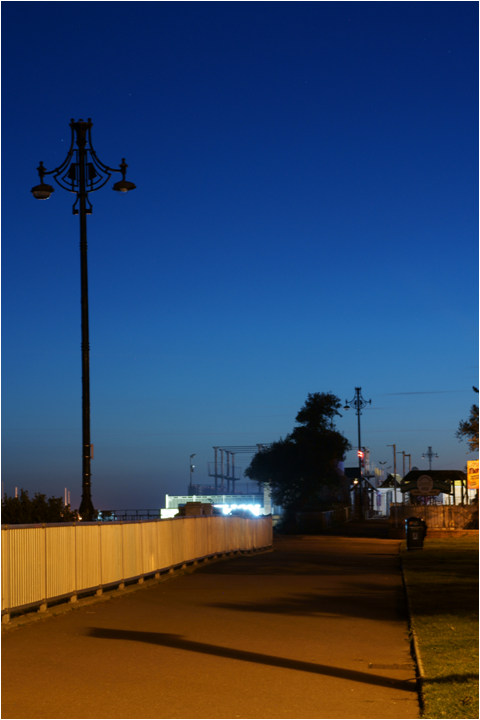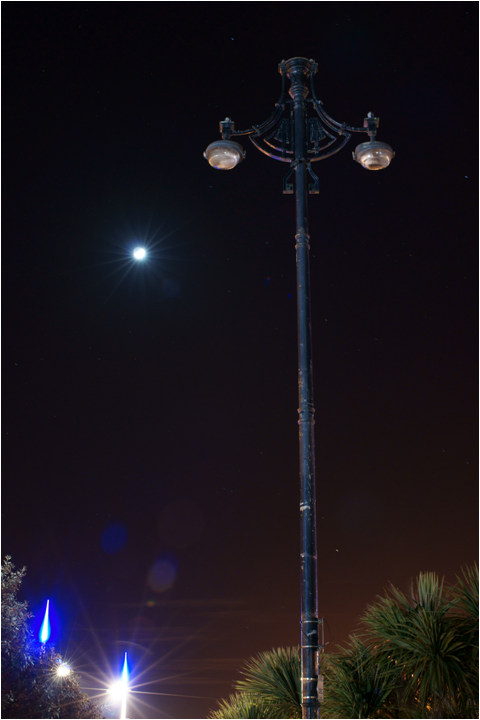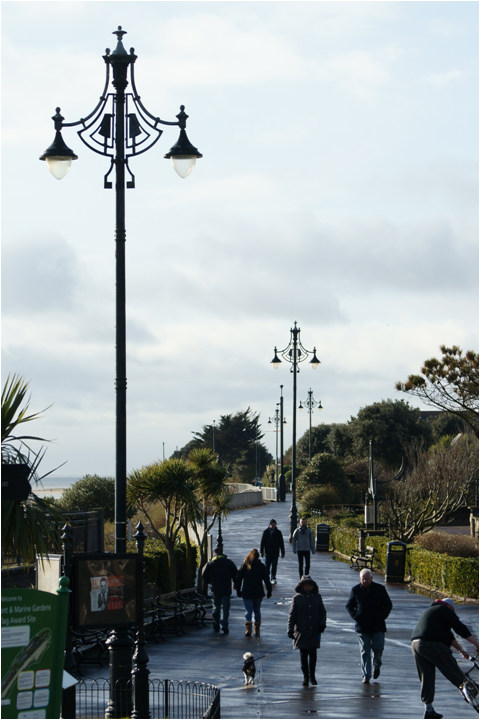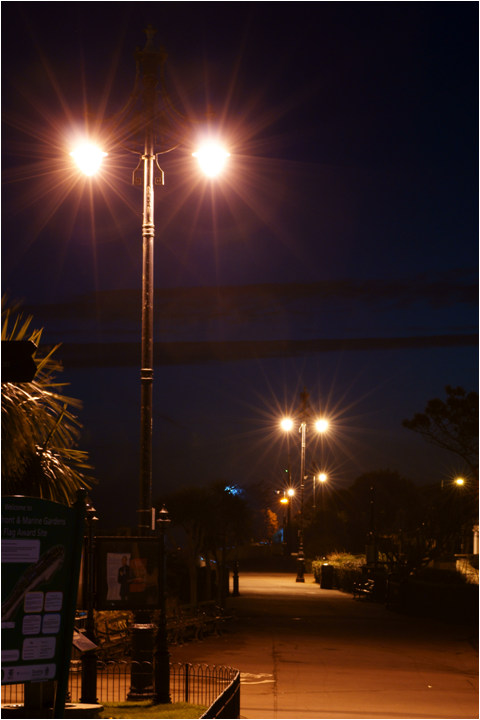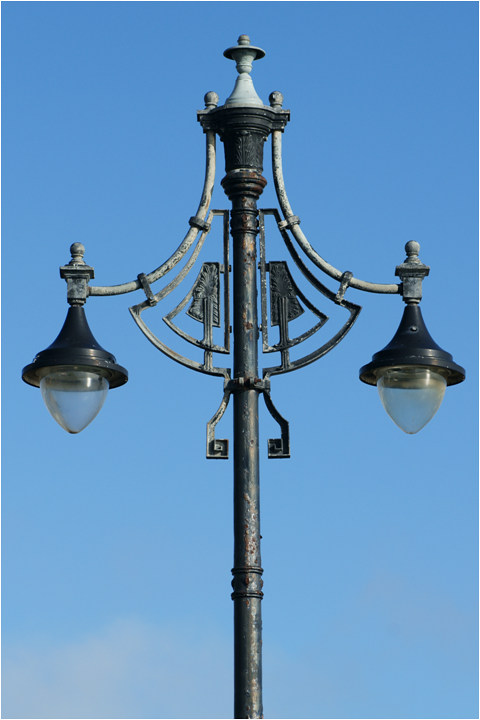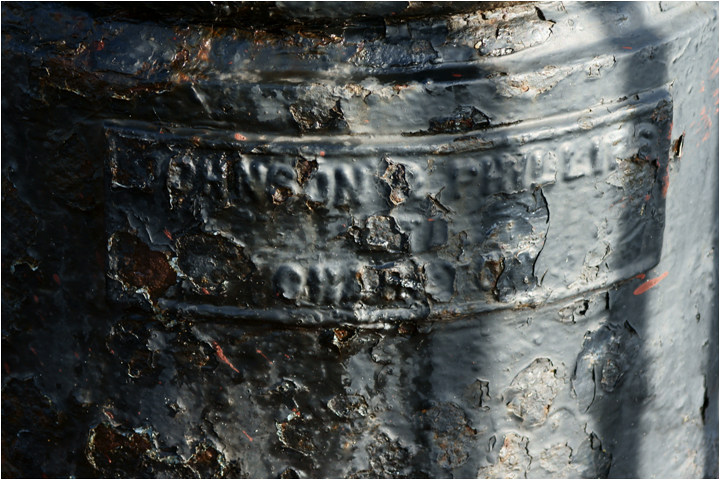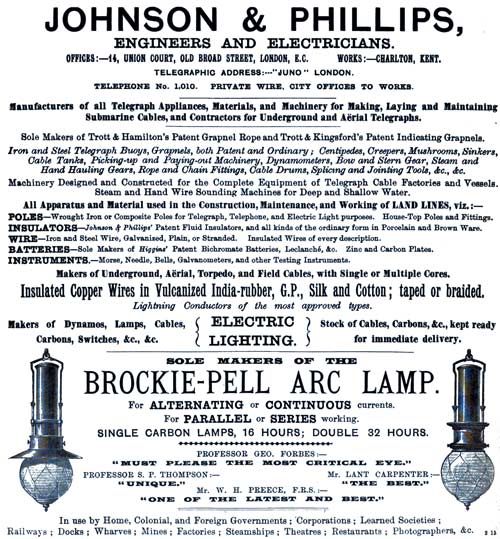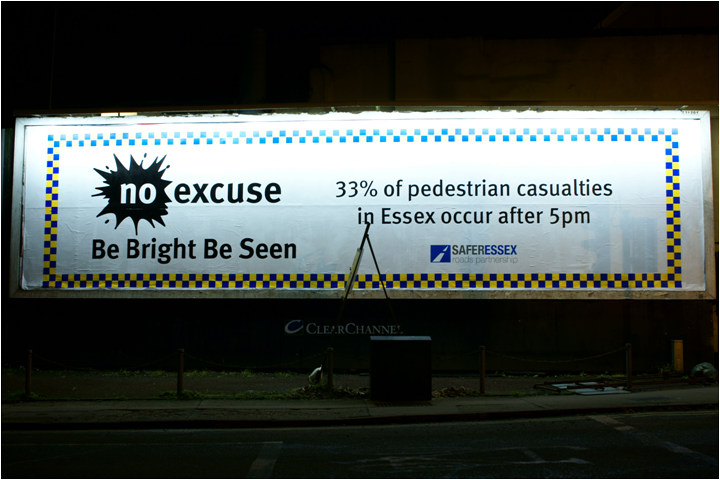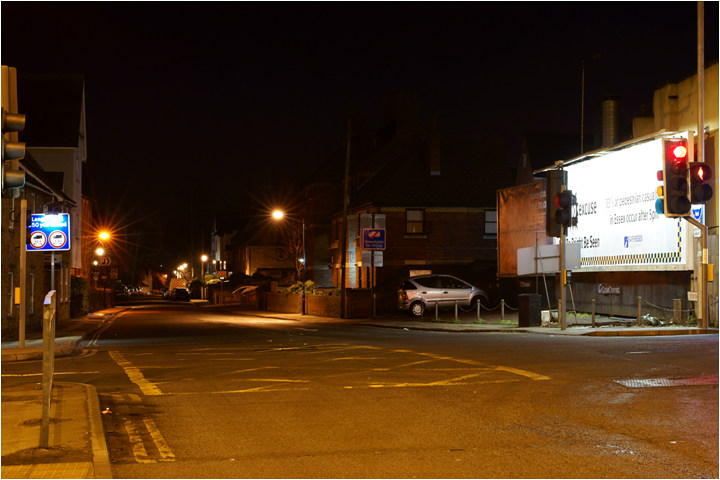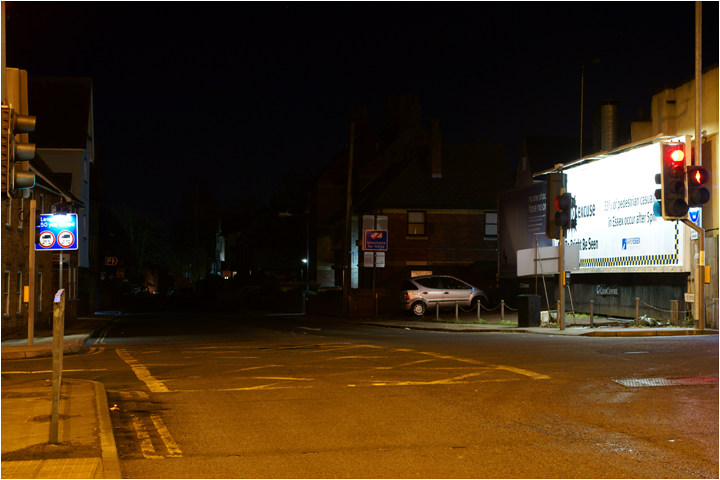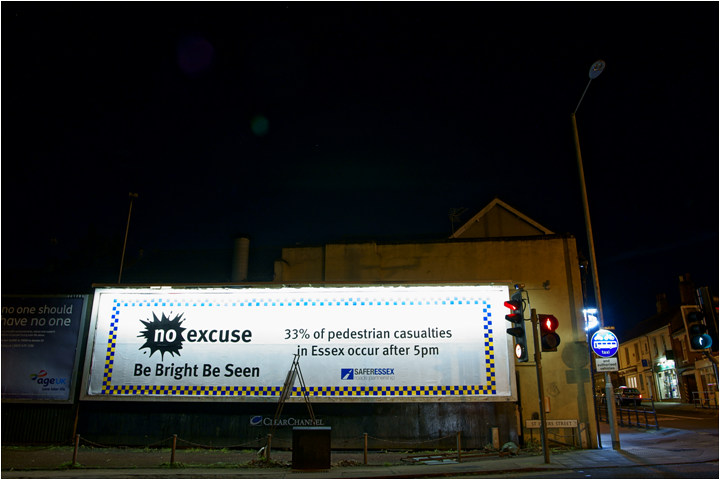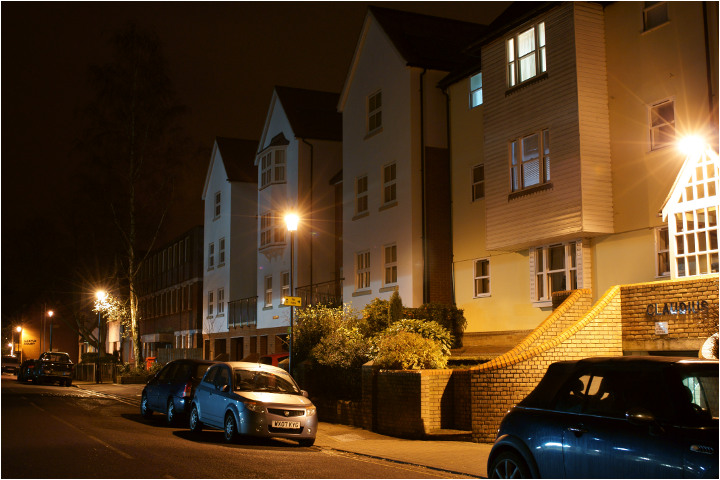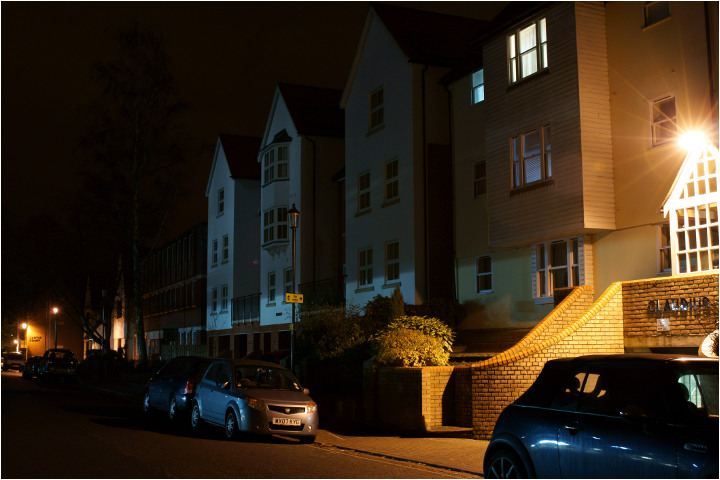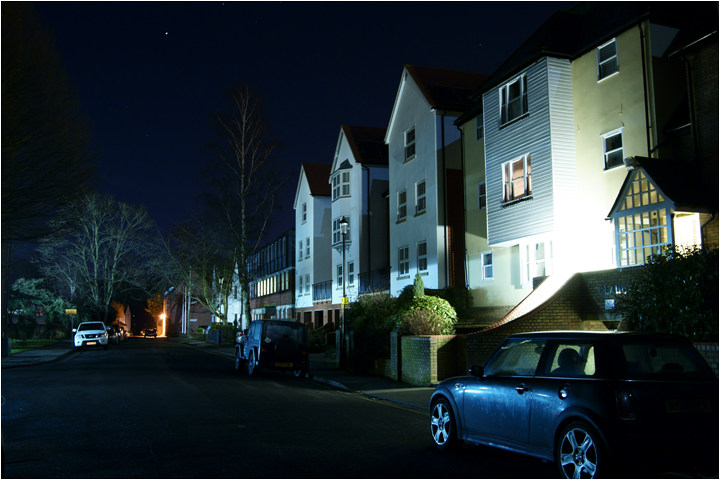Some unexpected news from the greensward on Clacton sea front, which until a few days ago was the home of about 1.5 miles' worth of ultra-rare top-entry GEC Z8430CMs (please correct me if the top entry version had a different code). The lanterns have been removed as the cast iron decorative brackets they are installed on pose a risk to public health:
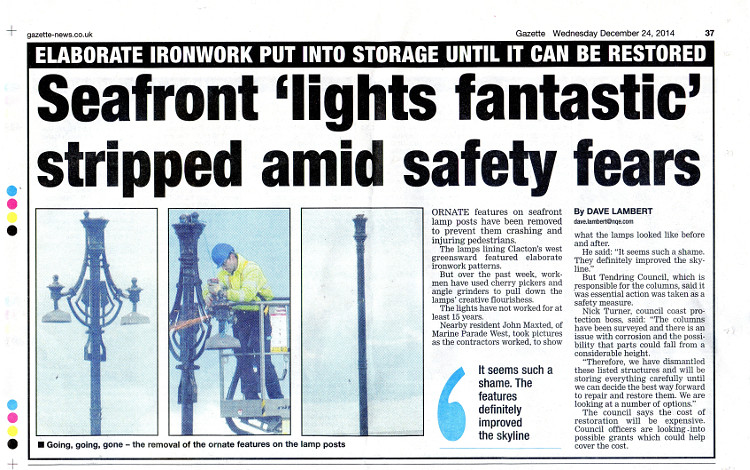
Daily Gazette, 24th December 2014
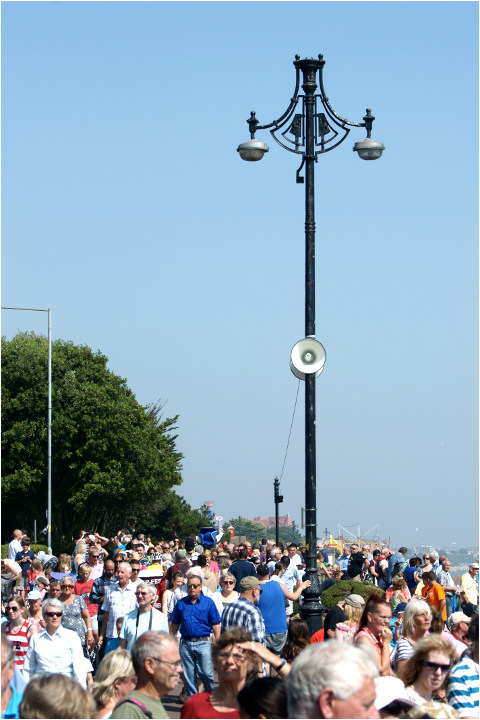
The appropriately-named Revo Clactons (as detailed on Simon Cornwell's web site) have been a feature of the clifftop path at Clacton sea front for around 80 years, and were available in two-arm and three-arm variants. The clifftop path saw only the two-arm variant installed. Photograph taken in August 2013.
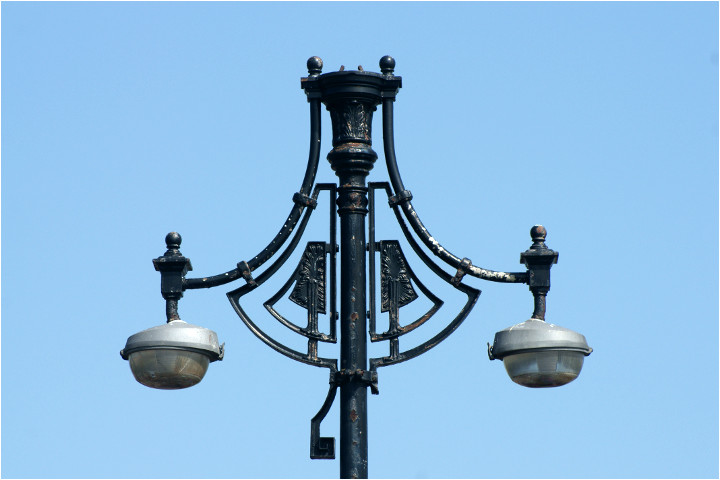
According to Mikey Ashworth's Flickr site, the Revo Clactons originally held Revo C6200 lanterns, but these gave way to the top-entry GEC Z8430CMs in the 1960s. This close-up photo, also from August 2013, reveals the poor condition of the installation's decorative brackets after many years of exposure to the coastal elements.
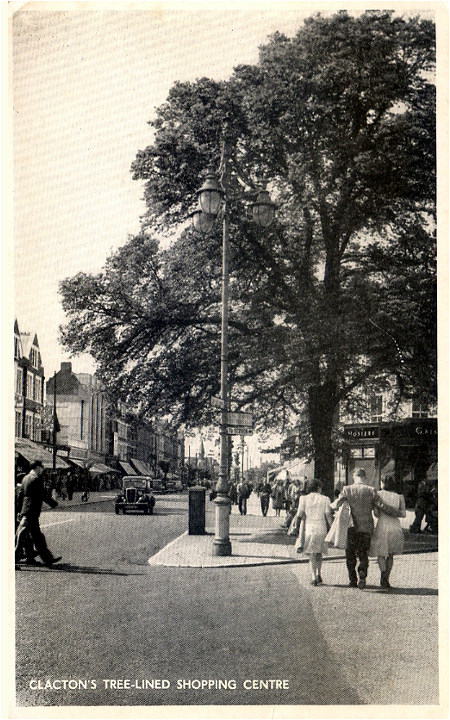
Early postcards show three-arm Revo Clactons with Revo C6200 lanterns installed in the town centre. This postcard published by M. & L. of Clacton is not dated.
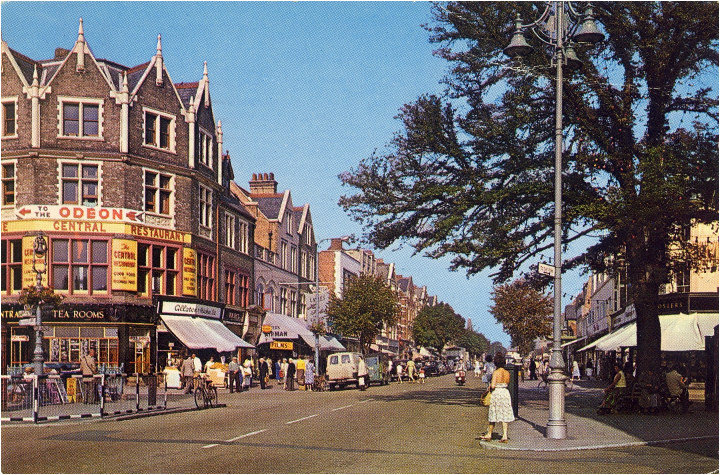
Later postcards show the time when new technology was beginning to threaten the survival of the Revo C6200 lanterns. This postcard, by Ernest Joyce & Co. and posted on 1st July 1964, shows the lanterns missing their distinctive bowls. The postcard also shows a side-entry GEC Z8430CM on a newly-installed cast iron column in the background.
The Revo C6200s in this postcard also outlived an installation of fluorescent three-eighties, which predated the introduction of GEC Z8430CMs in the town centre.
Shortly after the photograph for the above postcard was taken, this junction in the town centre was re-lit and the Revo Clacton and Revo C6200s were replaced with a Concrete Utilities Avenue 3DNN concrete column with a side-entry GEC Z8430CM. At this time (the mid-1960s), all the town centre's Z8430CMs were running mercury.
Although the newspaper report states that the lighting on the sea front hasn't worked for at least 15 years, my memory cannot confirm this. This length of time came as a bit of a surprise to me, as I would have imagined the council (Tendring District Council in this case, not Essex County Council) would have kept them in light due to the greensward being up to 30m wide in some places, meaning the lighting on the adjacent road along the sea front would not stretch far enough to light the popular and well-used clifftop path.
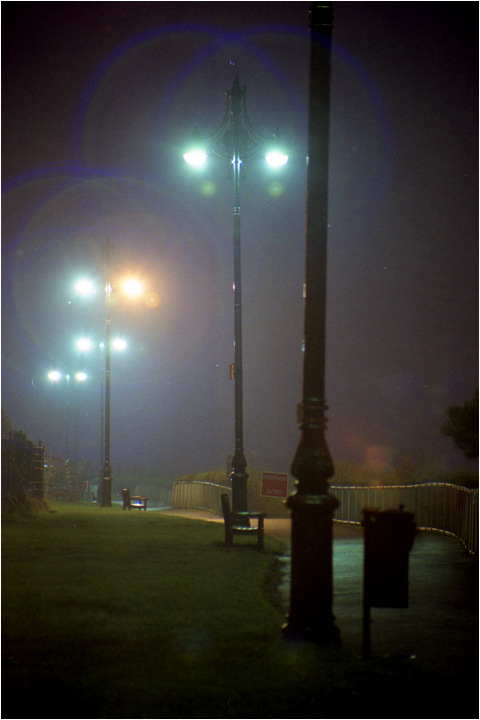
Thankfully a dig around in my own photo archive revealed this photograph of the clifftop path in January 1995. The Revo Clactons and top-entry GEC Z8430CMs are shown in light. As the lanterns had always ran mercury, I think the rogue SON lamp persuaded me to stop and take this photograph.
With the exception of the rogue SON lamp, this is how Clacton's clifftop path should be lit! For Clacton's sake, I do hope we'll see this sight again one day, but I concede that the mercury lighting won't be returning. A suitable while-light alternative would be fine.
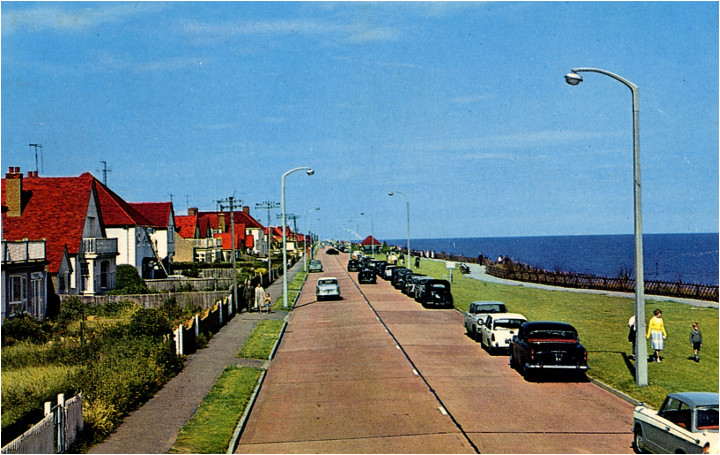
Clacton used to have an extensive installation of both top-entry and side-entry GEC Z8430CMs throughout the town centre and stretching along the sea front from Butlins to the west to Holland-on-Sea to the east. This D. Constance Ltd. postcard posted in August 1970 shows King's Parade, which runs the length of the sea front at Holland-on-Sea. Top-entry GEC Z8430CMs are shown installed on distinctively green Concrete Utilities Avenue 3DNN concrete columns.
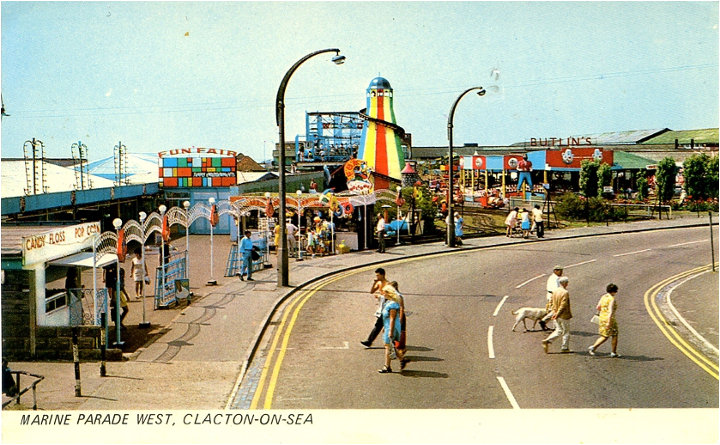
Concrete Utilities Avenue 3D concrete columns, again with top-entry GEC Z8430CMs were installed at the other end of town next to Butlins. This Sapphire postcard was posted in August 1973.
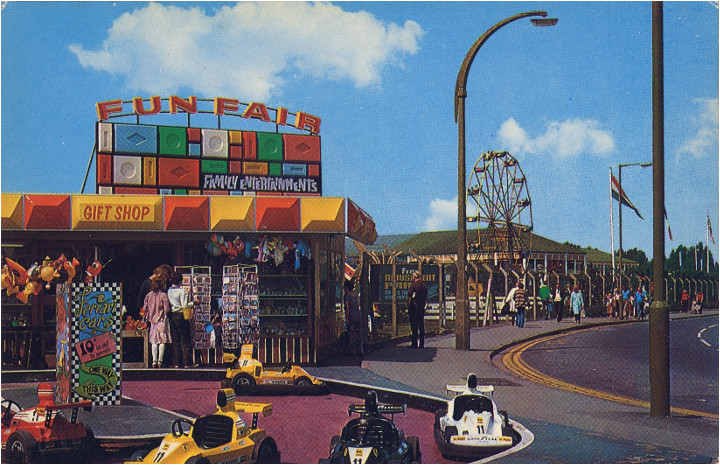
In the 1960s, the local council invested heavily in the GEC Z8430CM when it re-lit the town centre and the sea front road, but the Z8430CMs have suffered two big culls since then. The first cull was in the 1970s when the oil crisis meant many of the lanterns on the sea front road were replaced with Thorn Alpha Nines, ELECO GR100s and ELECO GR110s. This undated D. Constance Ltd. postcard shows the same location as the previous postcard, but the Z8430CMs have been replaced with GR110s on the original columns, and GR100s on casual replacements. With the exception of the clifftop path, the retained Z8430CMs were converted to SON.
The second cull happened in 2006 and 2007 when the town centre was regenerated. As part of the works, the town centre was re-lit with the DW Windsor Rio running metal halide.
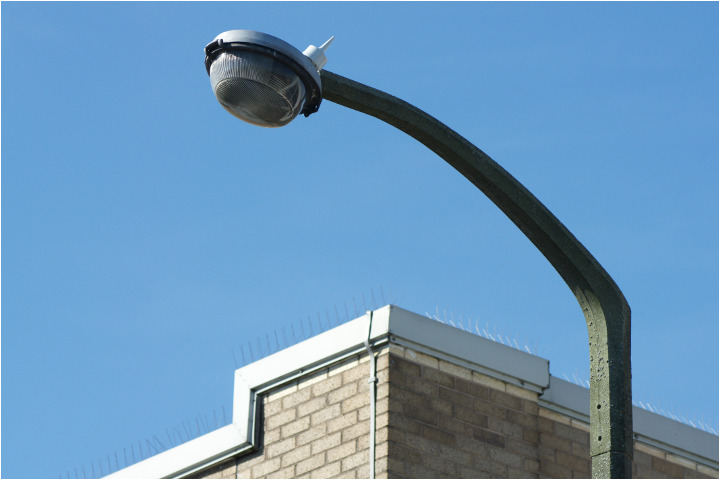
Thankfully, the town centre re-lighting work in 2006/2007 wasn't as extensive as the re-lighting of the town centre in the 1960s, and there is now a significant "doughnut ring" of SON-running surviving Z8430CMs surrounding the town centre. These are still going strong and have been converted to run on Essex County Council's Central Management System with the addition of a Telensa telecell. This photograph was taken in October 2013.
Coincidentally, many of the town's holiday parks also installed Z8430CMs on 8m Concrete Utilities Avenue 3DNN and 10m New Highway columns in the 1960s. Thankfully, many of these survive, and there is a particularly good example of the former still going strong in nearby Walton-on-the-Naze (from zedfive's Flickr site).
